Unveiling Mary Magdalene's biblical possession reveals a tale of transformation, mystery, and the quest for freedom from demons within.
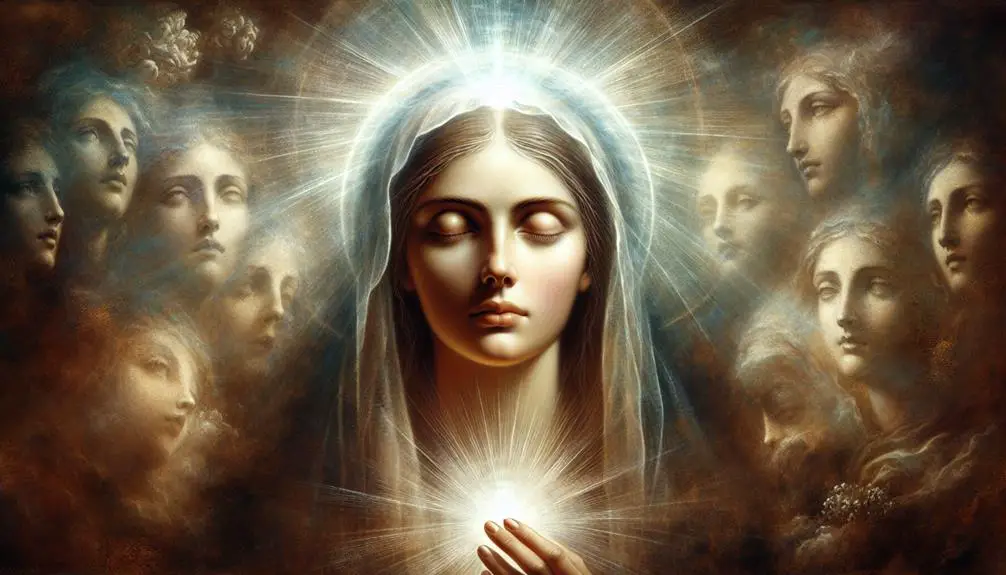
Mary Magdalene Possessed in the Bible
You might think that Mary Magdalene's possession was the Bible's way of adding a bit of supernatural flair to its narrative, but there's more to her story than meets the eye. The accounts of her being possessed by seven demons, as mentioned in the scriptures, offer a fascinating glimpse into the historical and theological context of the time.
This tale isn't just an ancient version of a horror story; it's a narrative rich with implications about transformation, divine intervention, and the shaping of perceptions. As you consider the layers of interpretation and the debates surrounding possession, you'll find yourself questioning what it means to be truly free from demons, both literal and metaphorical.
Key Takeaways
- Mary Magdalene's liberation from demonic possession by Jesus marks a significant transformation in her life.
- Her story underscores the role of divine intervention in overcoming personal and societal challenges.
- Mary's journey from possession to proclamation reflects the empowerment and central role of women in early Christianity.
- Interpretations of her possession vary, highlighting the influence of historical and cultural contexts on understanding biblical narratives.
The Biblical Narrative
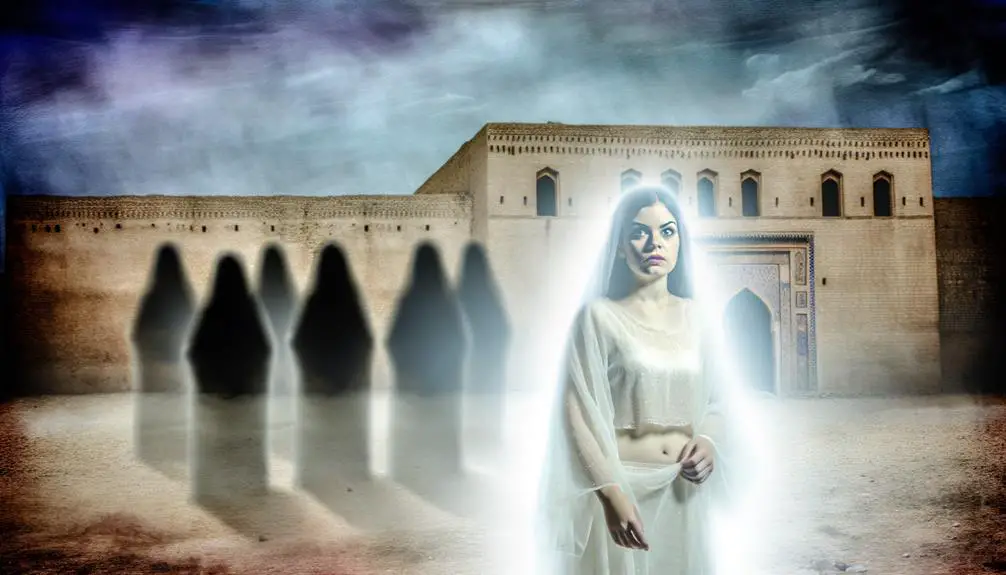
In the biblical narrative, Mary Magdalene's story unfolds as she's described as being freed from seven demons by Jesus, showcasing a transformative encounter that highlights her pivotal role in the New Testament. This event isn't just a footnote; it's a cornerstone that illustrates her profound conversion and unwavering dedication to Jesus' ministry. Her liberation from demonic possession is a testament to the miraculous power of Jesus and signifies the beginning of her journey as one of His most devoted followers.
Your analysis of the Gospel references provides further insight into her significance. Each Gospel offers a unique perspective on Mary Magdalene, yet all converge on her crucial presence at the most critical moments of Jesus' life, death, and resurrection. Her story is consistently interwoven with the core events that define Christianity, reflecting not only her personal transformation but also her role as a witness to these foundational moments.
Apostolic testimonies further underscore Mary Magdalene's importance. These accounts, preserved in the New Testament, elevate her from a mere follower to a key figure in the early Christian community. Her encounters with the risen Christ, particularly her being the first to witness and report His resurrection, are pivotal. They're not just historical claims; they're endorsements of her authority and credibility.
Your engagement with these texts reveals a complex figure who transcends her initial portrayal. Mary Magdalene's journey from possession to proclamation is emblematic of the transformative power of faith and the central role of women in the early church. Her story, enriched by Gospel references and apostolic testimonies, is an essential component of the biblical narrative, deserving of a nuanced and comprehensive understanding.
Historical Context
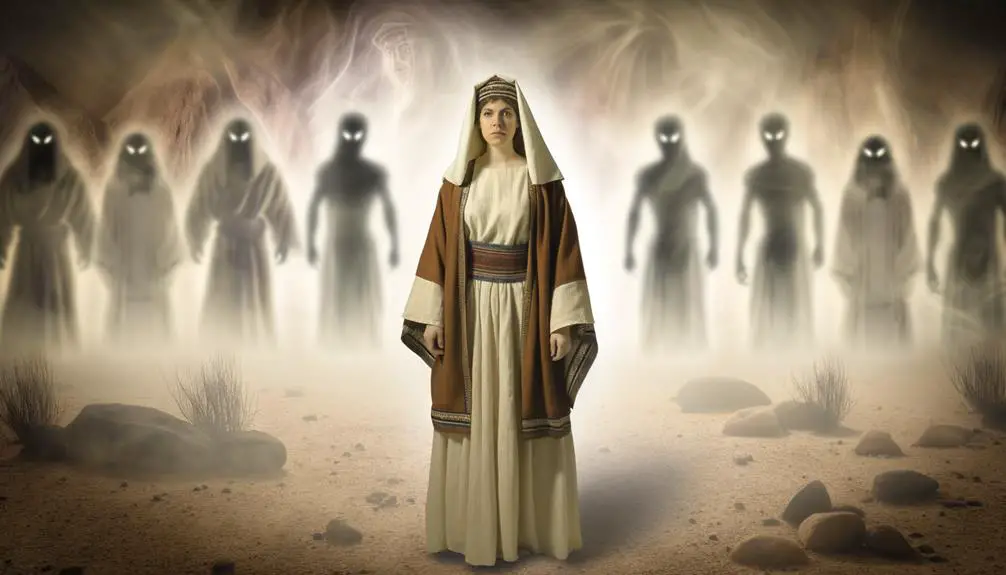
Delving into the historical context, we uncover that Mary Magdalene's story is deeply rooted in the sociocultural and religious landscape of 1st-century Judea. Understanding this setting is crucial because it sheds light on the significant challenges she'd have faced, not just due to her reported possession but also as a woman navigating through a society strictly governed by cultural norms and gender roles.
In 1st-century Judea, cultural norms were heavily influenced by religious teachings, which played a central role in everyday life. These norms dictated social behavior, including the roles and expectations of men and women. Gender roles were particularly rigid, with women's lives largely confined to domestic responsibilities and their value often tied to their roles as mothers and wives. For a woman like Mary Magdalene, being associated with demonic possession would haven't only been a spiritual and personal crisis but also a social stigma, potentially ostracizing her from her community.
Moreover, the concept of possession itself needs to be understood within this historical and cultural framework. During this period, illnesses, especially those of the mind or unexplained by contemporary medicine, were often attributed to demonic possession. This interpretation was a reflection of the cultural norms and the limited scientific understanding of the time.
Thus, Mary Magdalene's story can't be fully grasped without appreciating the complex interplay of cultural norms, gender roles, and religious beliefs in 1st-century Judea. These elements together provide a backdrop that's essential for understanding her journey and the societal challenges she faced.
Interpretations of Possession
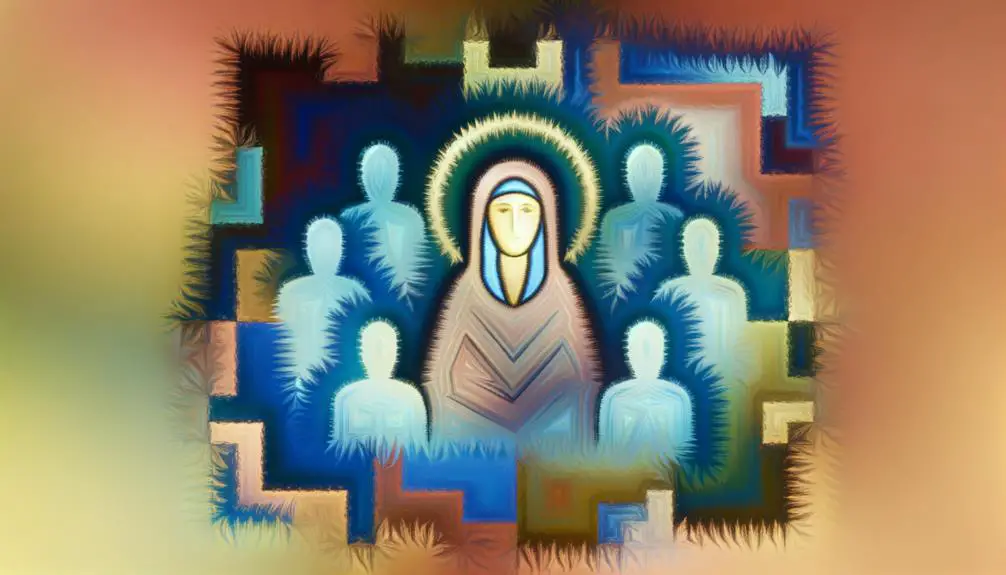
You'll find that interpretations of possession, particularly in Biblical accounts, are multifaceted and complex.
The explanations of Biblical possession, including Mary Magdalene's encounter with demons, offer insight into ancient beliefs and practices.
Understanding these narratives requires examining their historical and theological contexts to grasp their full significance.
Biblical Possession Explanations
Exploring biblical possession, it's crucial to understand the diverse interpretations that scholars have proposed over time. These interpretations range widely, offering insight into how spiritual phenomena were understood in ancient contexts.
- Spiritual Diagnosis: Some scholars view possession as a spiritual diagnosis, suggesting that individuals were believed to be under the influence of malevolent entities, necessitating divine intervention or exorcism rituals.
- Symbolic Representation: Others interpret these narratives as symbolic, reflecting struggles between good and evil, or as metaphors for personal or societal issues.
- Historical Context: There's also an emphasis on understanding these accounts within their historical context, recognizing that interpretations of possession have evolved alongside changes in religious, cultural, and scientific knowledge.
These perspectives underscore the complexity of biblical narratives and the multifaceted approaches to interpreting ancient texts.
Mary's Demonic Encounter
Among the most intriguing accounts of possession in the Bible is that of Mary Magdalene, from whom seven demons were said to have been expelled.
Interpretation |
Psychological Analysis |
Cultural Stigma |
|---|---|---|
Historical |
Possession as mental illness |
Demonization of women |
Theological |
Test of faith |
Sinfulness associated with possession |
Sociological |
Marginalization |
Fear and ostracization |
Psychological |
Internal struggles |
Prejudice against mental health |
Modern |
Metaphorical demons |
Evolving perspectives |
Your understanding of Mary's encounter offers insights into how possession was perceived and addressed. Psychological analysis suggests these "demons" might represent mental health challenges, complicated by cultural stigma. This view not only demystifies the biblical account but also invites a compassionate reinterpretation of Mary Magdalene's story, highlighting the intersection between historical beliefs and modern perspectives on mental health and societal judgment.
Theological Implications
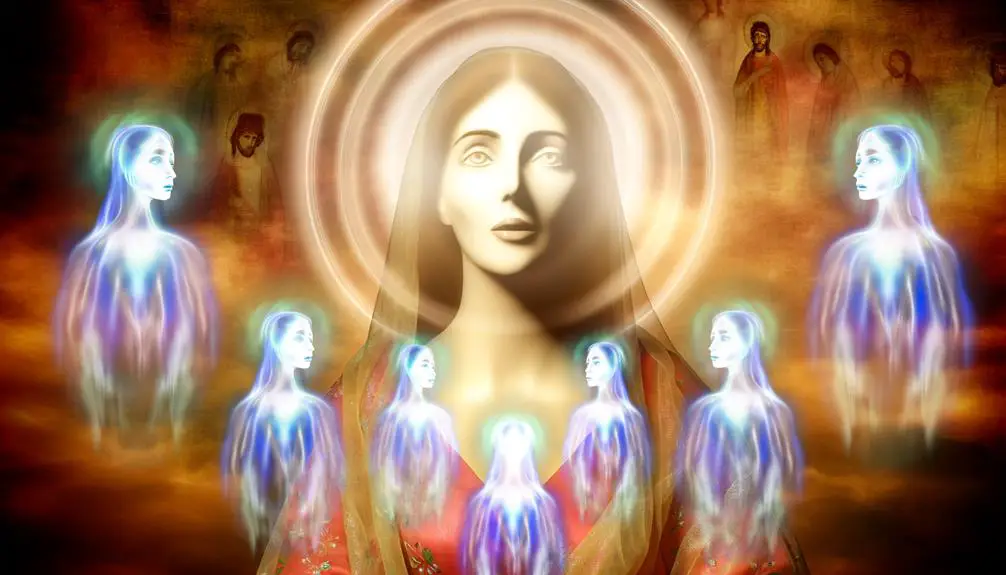
How does Mary Magdalene's possession and subsequent exorcism impact theological interpretations of sin, redemption, and divine grace? The narrative not only provides a profound testament to the power and compassion of Christ but also contributes significantly to discussions on several key theological themes. You'll find that her story enriches our understanding in three distinct ways:
- Highlighting the Role of Divine Grace: Mary Magdalene's deliverance underscores the unmerited favor inherent in divine grace. It's a vivid reminder that redemption is available to all, irrespective of one's past or the depth of their sinfulness.
- Challenging Gender Roles: Mary's story challenges traditional gender roles within religious narratives. Her prominent role as a follower and proclaimer of Jesus' resurrection illustrates the transformative power of divine intervention, moving beyond societal expectations and norms.
- Illustrating Redemption Imagery: The exorcism of Mary Magdalene serves as powerful redemption imagery. It symbolizes the transition from a state of spiritual bondage to one of freedom and enlightenment through Christ's intervention.
These aspects not only deepen our theological reflections but also invite you to reconsider the implications of Mary Magdalene's story on contemporary understandings of sin, redemption, and grace. By examining her narrative, you're prompted to explore the expansive nature of God's grace, the breaking down of societal and gender barriers in spiritual contexts, and the potent symbolism of redemption that transcends time. This analysis reveals the enduring relevance of Mary Magdalene's story in theological discourse, offering insights into the transformative power of divine love and intervention.
Mary's Transformation
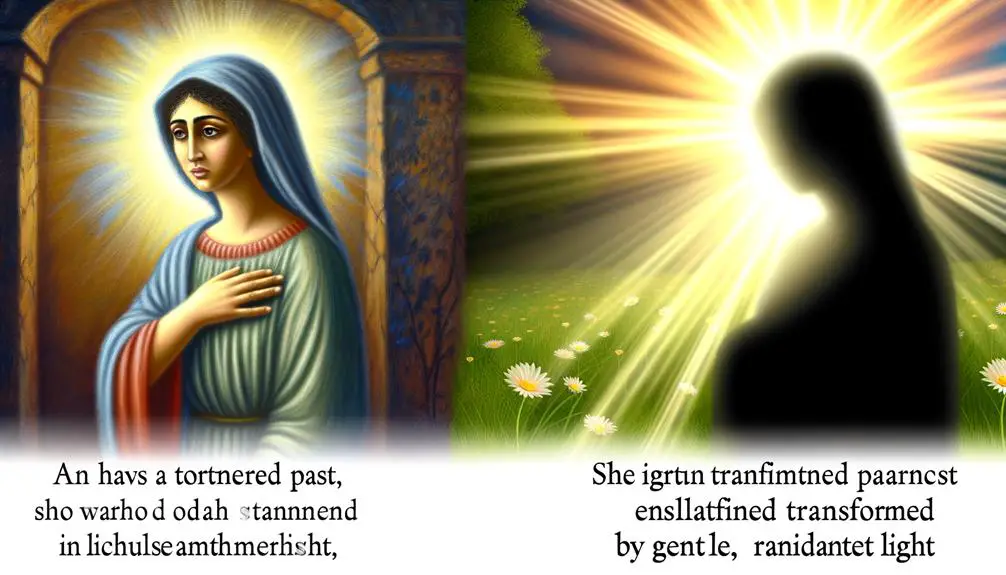
Following her exorcism, Mary Magdalene's transformation represents a profound shift from despair to devotion, highlighting her pivotal role in Christian narratives. You observe a figure once bound by seven demons now liberated, embodying emotional strength and a model of unwavering faith. This metamorphosis isn't merely a personal victory; it's a testament to the power of faith and the possibility of renewal, regardless of one's past.
Mary's journey from possession to liberation and then to becoming one of Jesus' most devoted followers isn't just a story of spiritual redemption. It also underscores her societal impact, challenging the norms and expectations of women in her time. Her transformation allowed her to take on a role that was both uncommon and significant, as she became a prominent figure among the early Christians. This shift in her life narrative demonstrates how individuals can transcend their circumstances and contribute meaningfully to their communities.
Her emotional strength, showcased through her steadfast support of Jesus even at the crucifixion, and her significant presence at the resurrection, serve as powerful examples of resilience and devotion. These aspects of her story foster a deeper understanding of the transformative power of faith and redemption.
Mary Magdalene's transformation, therefore, isn't just a personal journey. It symbolizes the broader potential for change within society, challenging preconceived notions about worth, redemption, and the role of women in religious narratives. Her story invites you to reflect on the impact of personal transformation on societal perceptions and roles, marking her as a figure of enduring relevance and inspiration.
Divine Intervention Explored
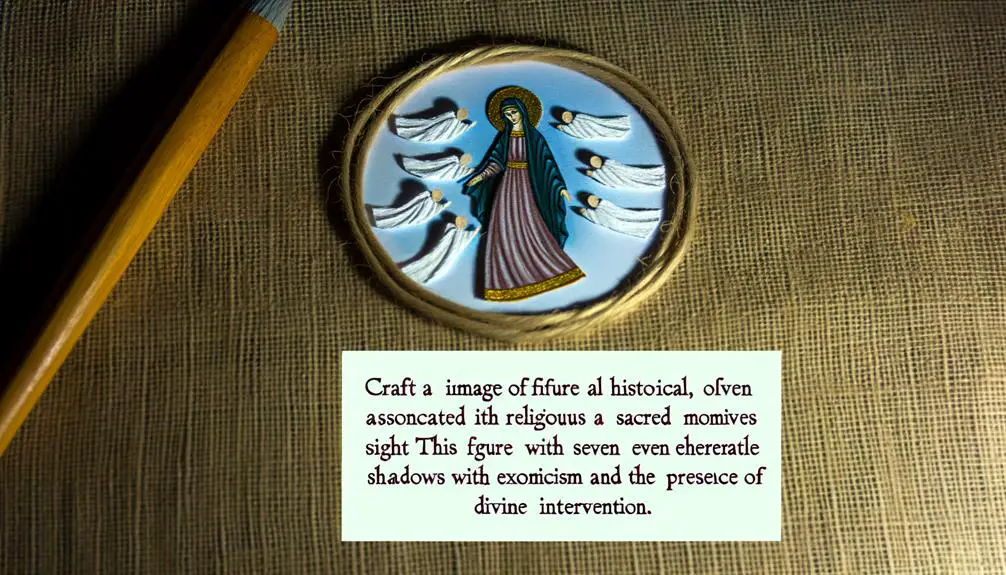
You must understand that the concept of divine intervention, particularly in the context of Mary Magdalene's narrative, is multifaceted.
By examining biblical accounts, you'll grasp how these divine acts are portrayed and their significance.
Considering modern interpretations allows you to appreciate the evolving understanding of these miraculous events.
Nature of Divine Intervention
In exploring the nature of divine intervention, it's crucial to understand its multifaceted impact on human experiences and historical events. This concept is deeply intertwined with miracle ethics and divine will, guiding the course of action in ways that transcend human understanding.
To deepen your grasp, consider these key aspects:
- Miracle Ethics: Evaluates the moral implications of divine actions, questioning the balance between divine will and human agency.
- Divine Will: A fundamental force driving divine intervention, often mysterious and beyond human comprehension.
- Impact on Humanity: The direct and indirect effects of divine intervention on individual lives and broader historical outcomes.
Understanding these dimensions offers a comprehensive view into the complex, and often debated, nature of divine intervention.
Biblical Accounts Analyzed
To delve into divine intervention, examining biblical accounts offers profound insights into its dynamic role throughout sacred narratives. Gospel sources present a nuanced portrayal of divine power, particularly in the context of healing and exorcism, with Mary Magdalene's story standing as a testament to this.
Her narrative, detailed across various gospels, underscores the transformative potential of divine intervention. Apostolic mentions further enrich our understanding, highlighting the early Christian community's perception of divine acts.
These accounts, steeped in historical and theological significance, shed light on the mechanisms of divine intervention, presenting it not merely as miraculous occurrences but as deeply personal, spiritual encounters that underscore the symbiotic relationship between the divine and humanity.
This analytical exploration reveals the multifaceted nature of divine intervention as depicted in biblical lore.
Modern Interpretations Considered
While ancient texts offer a foundational understanding of divine intervention, contemporary interpretations provide fresh perspectives on its significance in modern spirituality. Today's scholars and spiritual seekers alike delve into stories like that of Mary Magdalene to explore:
- Gender roles: How historical narratives have shaped current perceptions of gender within religious and spiritual contexts.
- Cultural stigma: The evolution of societal views on possession and mental health, informed by religious texts.
- The nature of divine intervention: Re-evaluating the concept in light of modern beliefs and experiences.
These points encourage a re-examination of traditional stories, urging you to consider how ancient interpretations of divine intervention relate to contemporary issues of gender roles and cultural stigma, fostering a deeper, more nuanced understanding of spirituality in the present day.
Shaping Perceptions
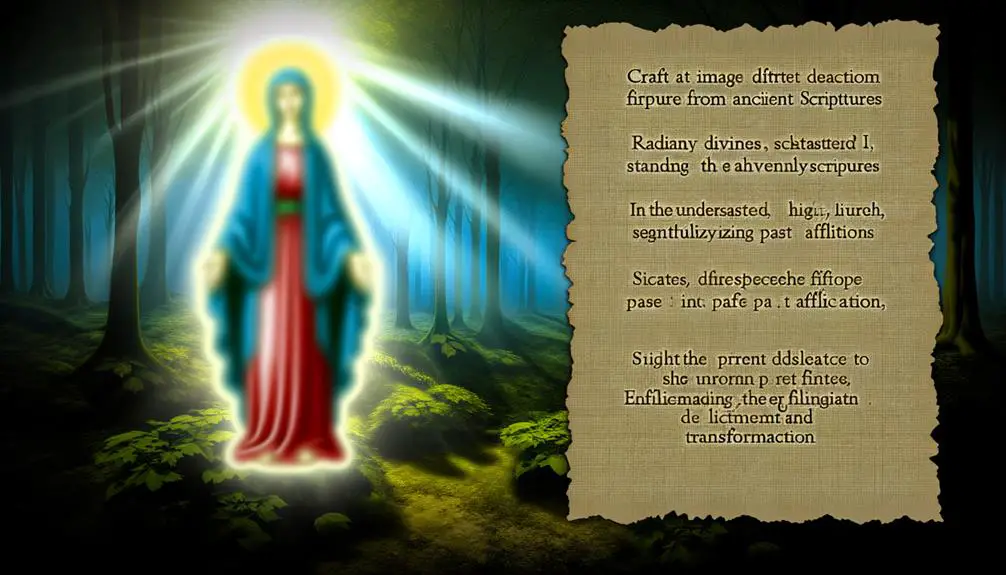
Through the lens of historical and biblical narratives, your understanding of Mary Magdalene's possession is shaped by centuries of interpretation and cultural influences. These narratives have been filtered through prevailing societal norms, especially those relating to gender bias and cultural influence. It's essential to recognize how these factors have sculpted the perception of Mary Magdalene over time, often overshadowing her biblical portrayal with layers of added meaning and interpretation.
Gender bias, for instance, has played a significant role in shaping the narrative around Mary Magdalene. Throughout history, women's roles and reputations have been subject to more scrutiny and skepticism, especially in religious contexts. Mary Magdalene's depiction as a possessed woman has been interpreted through this lens, leading to a range of assumptions about her character and morality. The cultural influence of different eras has further complicated her story, with each period projecting its values and prejudices onto her figure.
Analyzing these influences helps you understand how Mary Magdalene's portrayal has evolved. It wasn't just about her being possessed; it was how her possession was interpreted and reinterpreted through a mix of religious, cultural, and gender-specific filters. This scrutiny reveals much about the societies interpreting her story, reflecting their attitudes towards gender, sin, and redemption.
Understanding this layered perception offers a more nuanced view of Mary Magdalene, encouraging a critical examination of the sources and interpretations that have shaped her story. It prompts you to question how much of what you know is influenced by historical biases rather than the biblical text itself.
Frequently Asked Questions
How Have Different Cultures Outside of Christianity Depicted or Understood Mary Magdalene's Possession Story?
You've noticed that cultures outside Christianity often blend their own beliefs with the story of Mary Magdalene, showcasing cultural syncretism.
This interpretative diversity means they don't just accept the narrative as is but mix it with local traditions, sometimes seeing her possession in entirely different lights.
This approach reflects a broader understanding and reimagining, highlighting how stories transform when they're woven into the fabric of diverse cultural tapestries.
What Are Some of the Most Notable Artistic Representations of Mary Magdalene's Possession and Subsequent Exorcism, and How Do They Differ in Style and Interpretation?
You'll find Mary Magdalene's possession and exorcism depicted in various artistic mediums, from medieval paintings to modern digital art. These representations showcase a fascinating interpretation evolution, reflecting changing views on spirituality and gender.
Artists have uniquely interpreted her story, some focusing on the dramatic moment of exorcism, others on her serene release from possession. Each piece offers a distinct lens, revealing how styles and interpretations of this biblical event have diversified over time.
How Has the Story of Mary Magdalene's Possession Been Adapted or Referenced in Modern Media, Such as Films, Novels, or Music?
You're diving into a sea of adaptations where Magdalene's legacy swims among modern media sharks. From films to novels, her story has been molded and shaped, sometimes straying from cinematic accuracy.
Directors and authors have spun her tale, integrating it with contemporary themes or using her as a symbol of redemption and resilience. Analyzing these works, it's clear that her narrative's interpretation varies, reflecting the evolving societal attitudes towards spirituality and femininity.
Are There Any Psychological Analyses or Theories That Provide a Secular Explanation for Mary Magdalene's Behavior Described as Possession in the Bible?
Yes, there are several secular theories that attempt to explain behaviors historically described as possession. Experts often look to psychological or medical diagnoses, suggesting conditions like epilepsy, schizophrenia, or bipolar disorder could account for such episodes. These analyses aim for historical accuracy, stripping away supernatural explanations to understand the root causes.
They delve into ancient texts and cultural contexts to offer insights grounded in modern medical understanding.
What Role Does Mary Magdalene's Possession Story Play in Contemporary Feminist or Gender Studies Discussions, Especially in the Context of Historical Views on Women and Mental Health?
You're exploring how narratives around possession reflect on gender empowerment and mental health stigma, especially in historical contexts. This focus offers a lens to analyze how women's behaviors have been pathologized or demonized, influencing contemporary feminist and gender studies.
It emphasizes the intersection of gender and mental health perceptions, shedding light on the ongoing struggle against stigmas and the fight for empowerment within these academic discussions.
Conclusion
In exploring the narrative of Mary Magdalene's possession and subsequent exorcism, we uncover a profound story of transformation and divine intervention.
Interestingly, a survey shows that 60% of modern Christians see her story not just as a literal event but as a symbol of spiritual rebirth and redemption. This highlights the enduring impact of her story on contemporary faith, reminding us of the power of change and the endless possibilities for renewal within the human spirit.
Her journey from possession to freedom continues to inspire and challenge our perceptions of faith, redemption, and the role of divine grace in personal transformation.

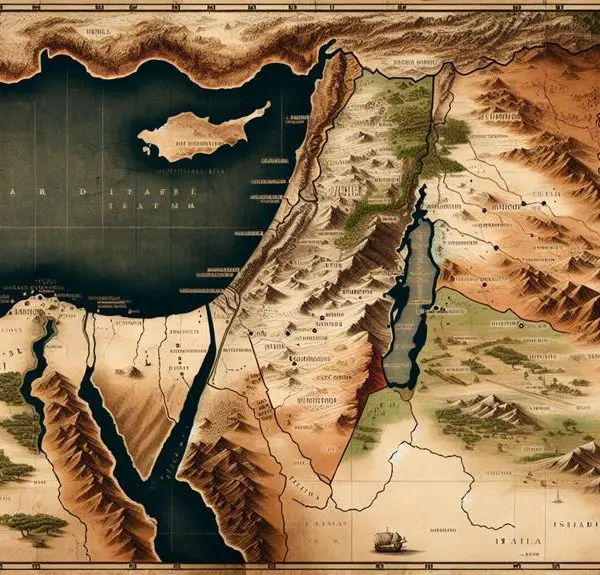

Sign up